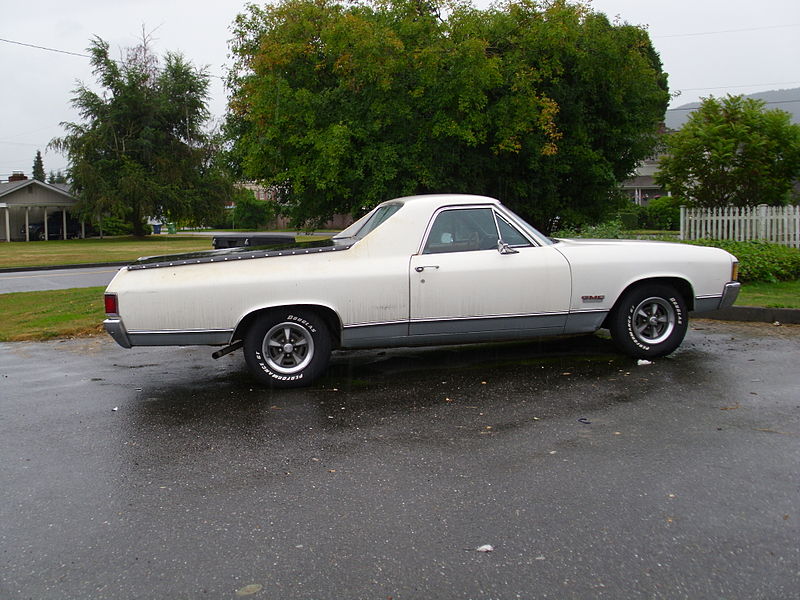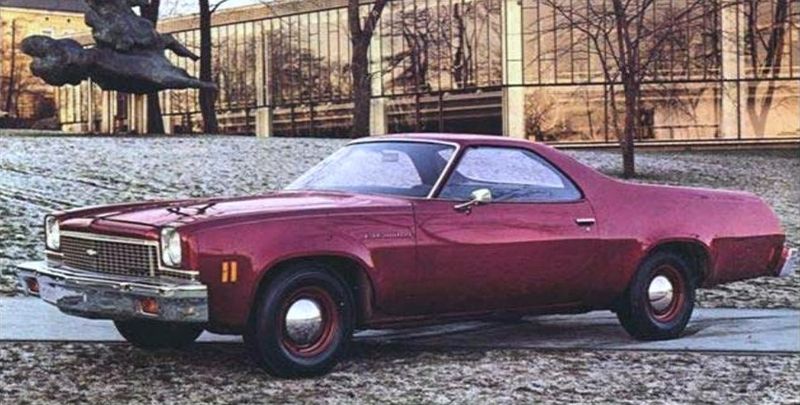fishbait08
I trust you know where the happy button is?
- Joined
- Mar 11, 2015
- Messages
- 855
- Likes received
- 4,742

1972 Chevrolet El Camino
Although the 1972 El Camino shared in the relatively minor facelift of Chevelle front ends, once again the major changes were under the hood.
That year, official horsepower ratings took a major cut as a result of a industry-wide policy shift (brought on by California legislation) away from using SAE Gross Horsepower measurement protocols (measured with the engine on a test stand by itself, with free-flowing headers, no accessories, and corrections for atmospheric conditions that produced 'ideal' results not in accordance with real world conditions) to the SAE Net Horsepower protocols, which measured an engine's output at the crankshaft under conditions reflecting how it would be actually installed in a car, with all engine-driven accessories, the car's exhaust system & emissions equipment, and it's air cleaner & intake assembly attached to the motor, as well as being tuned as it would be in the car, as opposed to being tuned for maximum power.
Although Net ratings were far more accurate, many consumers simply thought that the performance of cars took a massive hit that year, as the difference between Gross & Net Horsepower of American engines of the early '70s could be 25% or more. Indeed, manufacturers encouraged such thinking to conflate the change to a new measurement scheme with the power losses caused by emissions controls so that the apparent power loss could be explained away without making consumers think that they had been ripped off through inflated & inaccurate advertised horsepower ratings in previous years, as well as being a PR move aimed at regulators, safety & environmental lobbyists, and insurance companies to convince them that the horsepower races of the musclecar era were coming to a close. As the actual output of a particular engine configuration could vary depending on the application, and that many published Gross Horsepower ratings were inaccurate due to marketing-related reasons, there is no formula to convert Gross to Net Horsepower, or vice-versa, and instead, someone attempting that would have to rely on mathematical guesstimates based on performance testing data and states of tune, and even then, published road tests from the era have to be taken with a grain of salt, as manufacturers would sometimes give handpicked 'ringers' to the automotive press that had been specially tuned to be in better condition than what most regular buyers would get. (The most notorious automotive ringer perhaps being the 1964 GTO sent out on the press circuit, which had the stock 389 ci V-8 secretly replaced with a 421 Super Duty motor that Pontiac normally sold for racing purposes only.)
Last edited:















































![36777-Digimon_World_[U]-4.png](/proxy.php?image=https%3A%2F%2Fr.mprd.se%2Fmedia%2Fimages%2F36777-Digimon_World_%5BU%5D-4.png&hash=28b6adbdd1e8710d5f7f9c34113f3b14)



